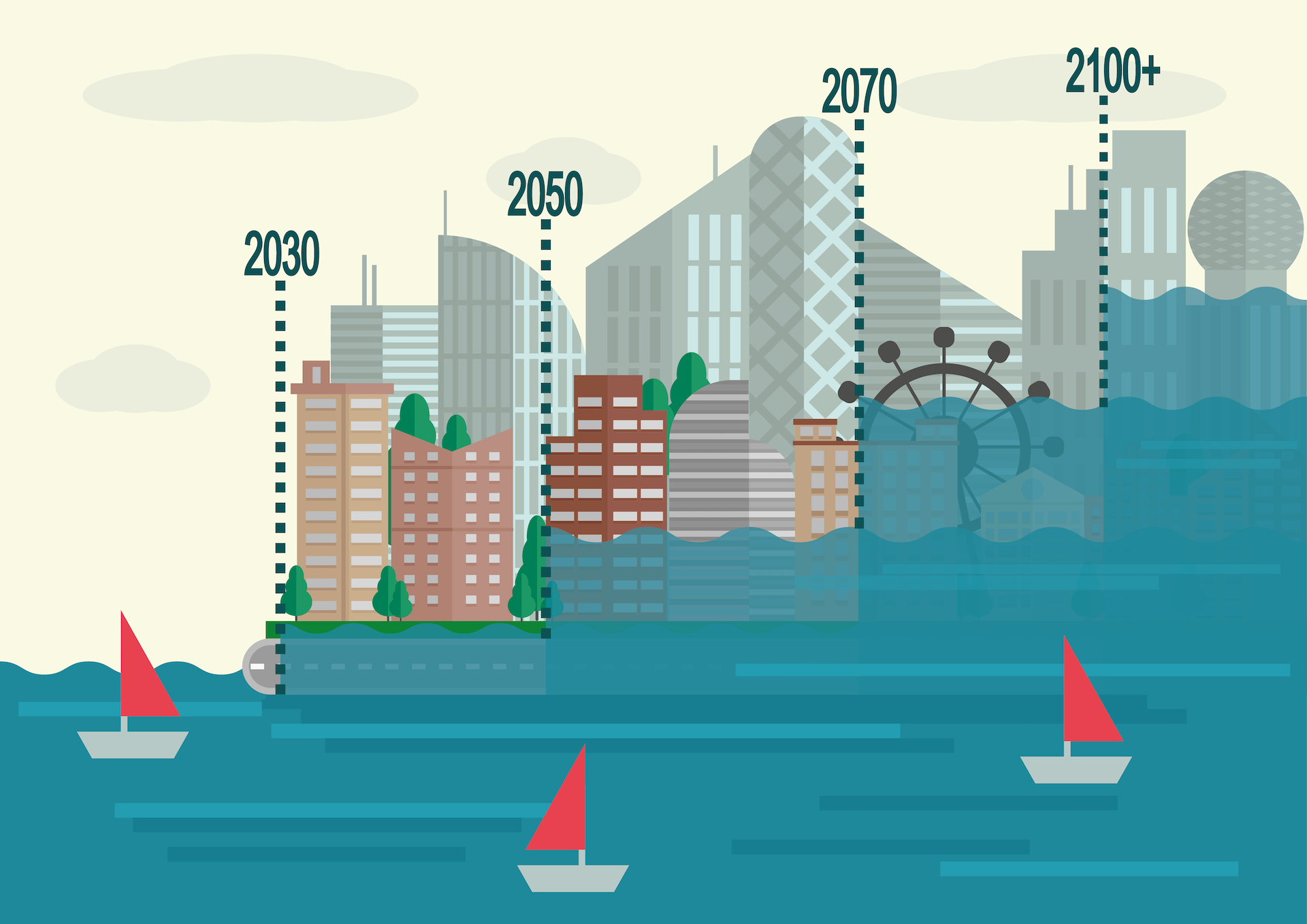Accelerate climate action now
Despite stark warnings and measurable changes to our climate, global greenhouse gas emissions continue
to rise. But decoupling economic growth and emissions is possible – if we make the right choices
Human activities have unequivocally caused global warming, with global surface temperatures reaching 1.1 ̊C above preindustrial levels in 2011–2020. Atmospheric carbon dioxide concentrations were higher than at any time in at least two million years. The rate of sea level rise almost doubled between 2006 and 2018, compared to the 35-year period ending in 2006.
Due to climate change, approximately 3.6 billion people are exposed to acute food insecurity and reduced water security, with the largest adverse impacts in Africa, Asia, Central and South America, least developed countries, small island states and the Arctic, hindering efforts to meet the Sustainable Development Goals. Climate change has slowed the growth in agricultural productivity over the past 50 years.
In all regions, increases in extreme heat events have resulted in human mortality and morbidity. Human mortality from floods, droughts and storms in highly vulnerable regions was 15 times higher than in regions with very low vulnerability. The frequency and intensity of extreme events such as heatwaves, heavy precipitation, droughts and tropical cyclones have increased and their attribution to human influence has further strengthened. Climate-related food-borne, water-borne and vector-borne diseases have increased. Climate extremes increasingly drive displacement in Africa, Asia, North America, and Central and South America.
Continued warming will hasten the limits to adaptation for ecosystems. Some tropical, coastal, polar and mountain ecosystems have reached hard limits to adaptation. In addition, soft limits to adaptation in socioeconomic systems are arising from financial, governance, institutional and policy constraints.
Continued warming will make ecosystem-based adaptations ineffective, such that restoration of wetlands and upstream forest ecosystems will no longer be able to reduce flood risks and urban heat. With increasing warming, natural lands and oceans will have less capacity to function as carbon sinks.
Abrupt, permanent changes
Further global warming will increase the likelihood and impacts of abrupt and permanent changes in the climate system. As warming levels increase, so does species extinction or irreversible loss of biodiversity in ecosystems including forests, coral reefs and in Arctic regions. At warming levels between 2 ̊C and 3 ̊C, the Greenland and West Antarctic ice sheets will be almost completely lost and irreversibly over multiple millennia, causing several metres of sea level rise.
To limit warming to 1.5°C, greenhouse gases emissions should peak as soon as possible – no later than 2025 – and decline rapidly towards net zero by 2050. Yet global greenhouse gas emissions have continued to increase.
Average annual emissions during 2010–2019 were higher than in any decade on record. Approximately 79% of global emissions came from energy production and the sectors of energy end use such as industry, transport and buildings. And the rest came from agriculture, forestry and other land uses.
Emissions vary substantially across countries. Global average per capita emission is 6.9 tonnes of carbon dioxide equivalent. Least developed countries and small island developing states have much lower per capita emissions.
Global emissions in 2030 implied by countries’ pledges (a 10% reduction relative to 2019) exceed the emissions level in line with limiting warming to 1.5°C (which need a 43% reduction relative to 2019), leading to global warming of 2.8°C by 2100 if the level of ambition remains as is.
A pledge is one thing and implementation is another. Policies implemented by the end of 2020 would produce smaller emissions reductions than the pledged reductions. If this gap continues, the global temperature increase is projected to be 3.2°C by 2100.
Critical enablers
We have the tools and know-how to tackle climate change. Climate investment must increase three to six times the current levels. Accelerated financial support for developing countries from developed countries is a critical enabler to enhance climate action for adaptation and mitigation and address inequities in access to finance and economic vulnerability to climate change. Sufficient global capital and liquidity exist to close global investment gaps but there are barriers to redirect capital to climate action. Clear support by governments will reduce financing barriers for scaling up financial flows.
At least 18 countries have sustained emissions reductions for longer than 10 years. In the decade ending 2019 there were sustained decreases in the unit costs of solar energy (85%), wind energy (55%) and lithium ion batteries (85%), and large increases in their deployment – more than 10 times for solar and 100 times for electric vehicles. Decoupling economic growth and emissions is possible.
The path to net zero emissions requires political commitment and coordinated policies. It relies on international cooperation, effective ecosystem stewardship, inclusive governance, the sharing of diverse knowledge, and the sharing of benefits and burdens.
We live in a diverse world in which everyone has different responsibilities and different opportunities to enact change. Some can do a lot while others need help managing the change. And that change will be shaped by the choices we make – starting now. We need to make the right choices.












